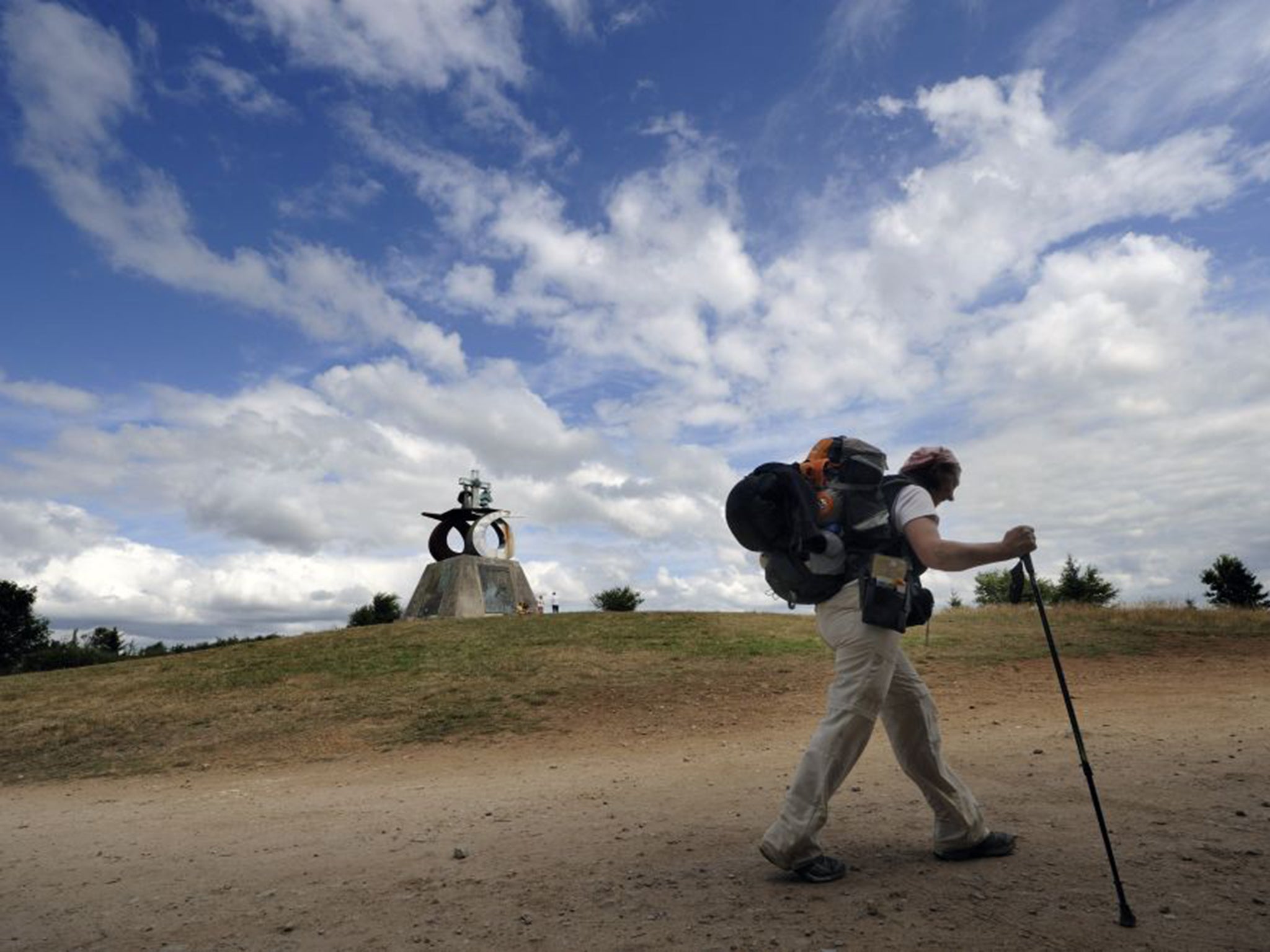Camino de Santiago: Pilgrims can take a month walking 455 miles to visit the remains of St James – or take the luxury train
Getting to the Galician city of Santiago de Compostela used to guarantee sore feet - but there is now an easier way

Your support helps us to tell the story
From reproductive rights to climate change to Big Tech, The Independent is on the ground when the story is developing. Whether it's investigating the financials of Elon Musk's pro-Trump PAC or producing our latest documentary, 'The A Word', which shines a light on the American women fighting for reproductive rights, we know how important it is to parse out the facts from the messaging.
At such a critical moment in US history, we need reporters on the ground. Your donation allows us to keep sending journalists to speak to both sides of the story.
The Independent is trusted by Americans across the entire political spectrum. And unlike many other quality news outlets, we choose not to lock Americans out of our reporting and analysis with paywalls. We believe quality journalism should be available to everyone, paid for by those who can afford it.
Your support makes all the difference.Those who choose to spend a month walking the Camino de Santiago may be left with many things: perhaps a new perspective on life, new friends, or a new feeling of spirituality. The one thing that they will certainly have is sore feet.
The Camino is in fact several pilgrim routes in northern Spain that eventually find their way to the Galician city of Santiago de Compostela, where the remains of the apostle St James are apparently buried in the magnificent cathedral.
Since 1211, when St James’s body was supposed to have been interred, people have walked the month-long route. Today, it is a favourite with tourists, the adventurous and the recently divorced.
Those wanting to show their devotion to St James without the 455-mile preamble, have always been given short shrift. Until now, that is.

Next month, Spain’s national rail company, Renfe, will put its luxury Al Andalus train, which ordinarily tours the sites of Spain’s Islamic history in the south of the country, to work on the pilgrim trail. It could not be more different to the blisters and cheap hostels that walking the Camino normally entails.
Known as “a palace of wheels,” the Al Andalus train carriages were originally built in France in 1929 for the British monarchy when they slipped out of London for the summer. After catching the boat to Calais, the train would then take George V and his family through France to the French Riviera for the summer.
A six-day trip with a stay in the Deluxe Suite will set train-travelling pilgrims back a princely €3,740 (£2,679) per person. By contrast, websites dedicated to the pedestrian version reckon that walkers can do the whole month-long journey for as little as €1,000, although most recommend about €3,000.
There are several routes typically taken by walkers, as well as those who cycle, and in some cases take the most traditional mode of transport – a donkey. The most popular – the French Way – actually begins across the Pyrenees in the commune of Saint-Jean-Pied-de-Port. After winding their way through the mountains, modern-day pilgrims have already covered 267 miles when they arrive in León, more than half way to Santiago de Compostela. But it is only here that next month’s rail-bound pilgrims will start their journey – beginning with a multi-course dinner and several fine wines to set them up for the first day’s train travel next morning.
“For the duration of the journey, the Al Andalus will become your living room, your transportation, meeting place, bar, bedroom: a hotel on wheels in which you sleep and wake up in a different place every day,” says the marketing on Renfe’s website. “The landscape passing by the window of your suite or the lounge where you are having a coffee is never the same. That simple fact makes the trip itself unique and unlike any other experience.”
Those toiling with a backpack, filled with enough clothes to last a month, and blisters the size of golf balls on the soles of their feet may beg to differ.
Walkers who have completed the Camino say that arriving in Santiago feels like a spiritual event, even for the non-religious. Whether arriving at the grey-brick station at Santiago de Compostela will engender the same emotion for train-travelling pilgrims remains to be seen.
More than 200,000 people completed the Camino in 2013, including 66 who made the journey in a wheelchair. More than 15 per cent are aged over 60. While the Al Andalus train may offer a luxurious alternative to 30 days walking, it does rather diminish from the achievement of those who trek the whole distance.
Join our commenting forum
Join thought-provoking conversations, follow other Independent readers and see their replies
Comments